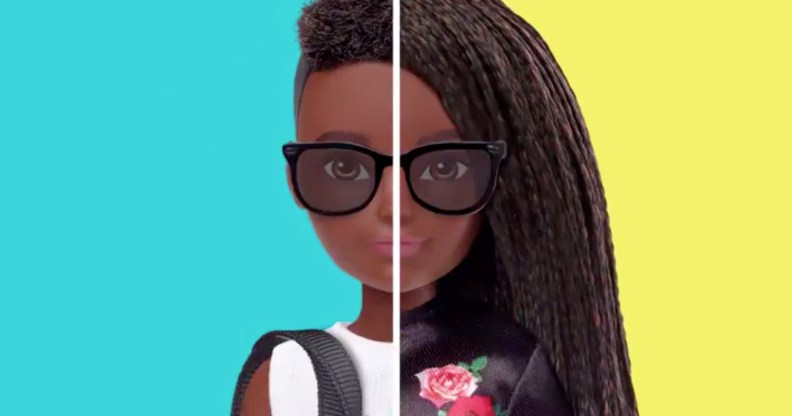Mattel just launched a gender non-conforming doll line

Mattel has created dolls that are customisable in their gender expression. (Mattel)
Mattel has created dolls that are customisable in their gender expression. (Mattel)
Mattel has launched a line of gender non-conforming and inclusive dolls “designed to keep labels out and invite everyone in”.
The Creatable World dolls rival the toy manufacturer’s previous hyper-feminised creations like Barbie, Polly Pocket and American Girl dolls.
The toys come with short hair and a longer wig, as well as various items of clothing that include “masculine” and “feminine” options, so children can customise its gender expression with more than 100 combinations.
Mattel tested the dolls with 250 US families from seven states, including 15 children who are gender non-conforming or trans.

Gender creative kids do not often see themselves in the toys they play with. (Creatable World/ YouTube)
Monica Dreger, head of consumer insights at Mattel, told TIME Magazine: “There were a couple of gender-creative kids who told us that they dreaded Christmas Day because they knew whatever they got under the Christmas tree, it wasn’t made for them.
“This is the first doll that you can find under the tree and see is for them because it can be for anyone.”
During testing, children enjoyed the label-free doll which allowed them to use their imagination, without telling them who was supposed to play with it.
Some parents, however, were concerned about the dolls pushing a “political agenda”.
But Richard Dickson, the president of Mattel, told TIME Magazine: “We’re not in the business of politics and we respect the decision any parent makes around how they raise their kids. Our job is to stimulate imaginations.
“Our toys are ultimately canvases for cultural conversation, but it’s your conversation, not ours; your opinion, not ours.”

Each doll allows for more than 100 customisation options. (Mattel)
He added: “If all the parents who saw the dolls said, ‘This is what we’ve been waiting for,’ we wouldn’t be doing our jobs.
“That would mean this should have already been in the market. So we’re maybe a little behind where kids are, ahead of where parents are, and that’s exactly where we need to be.”

